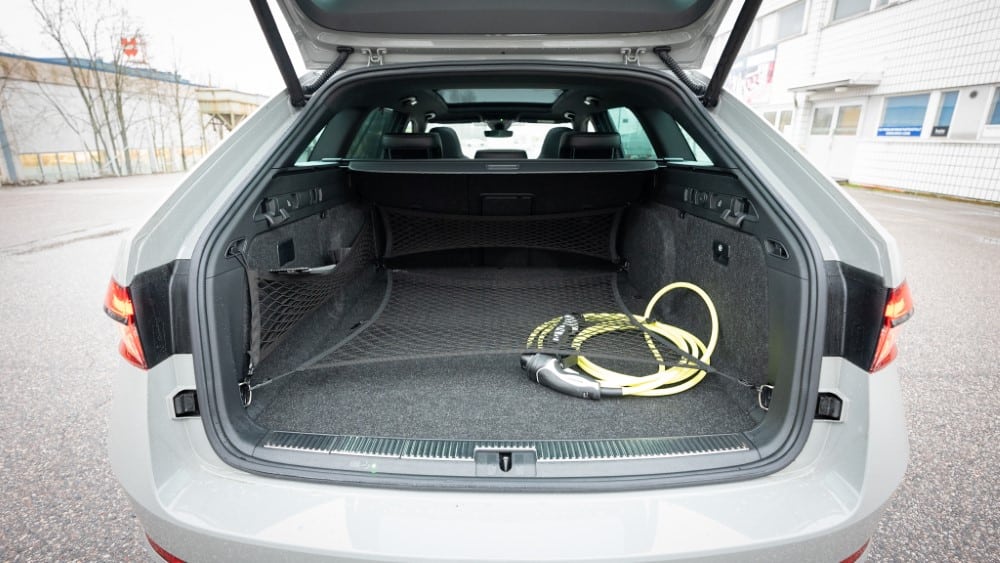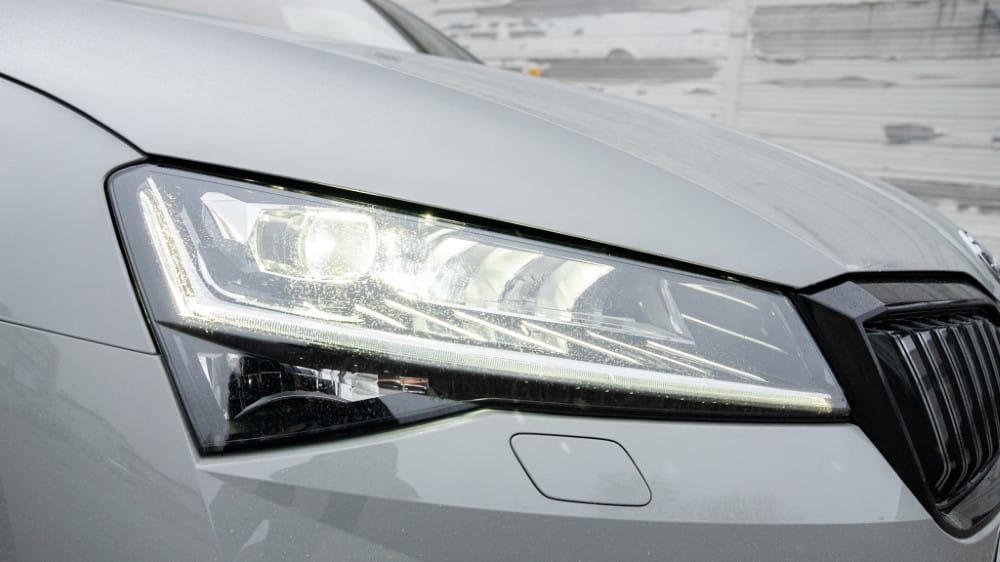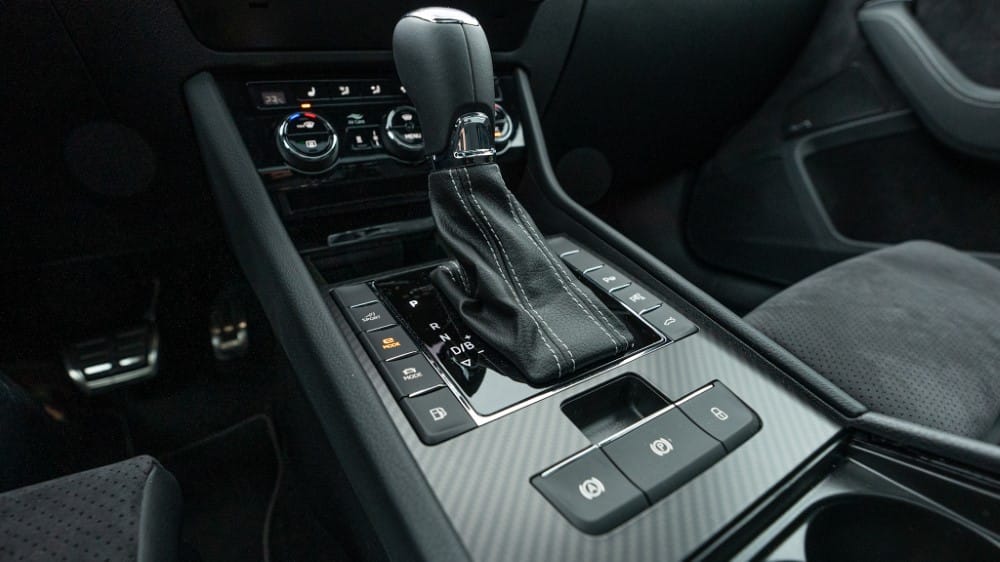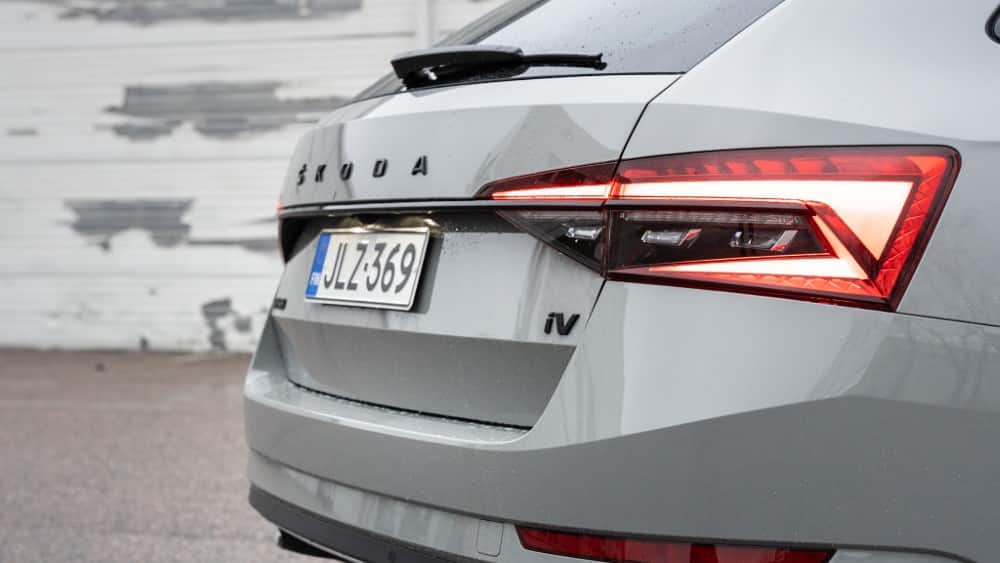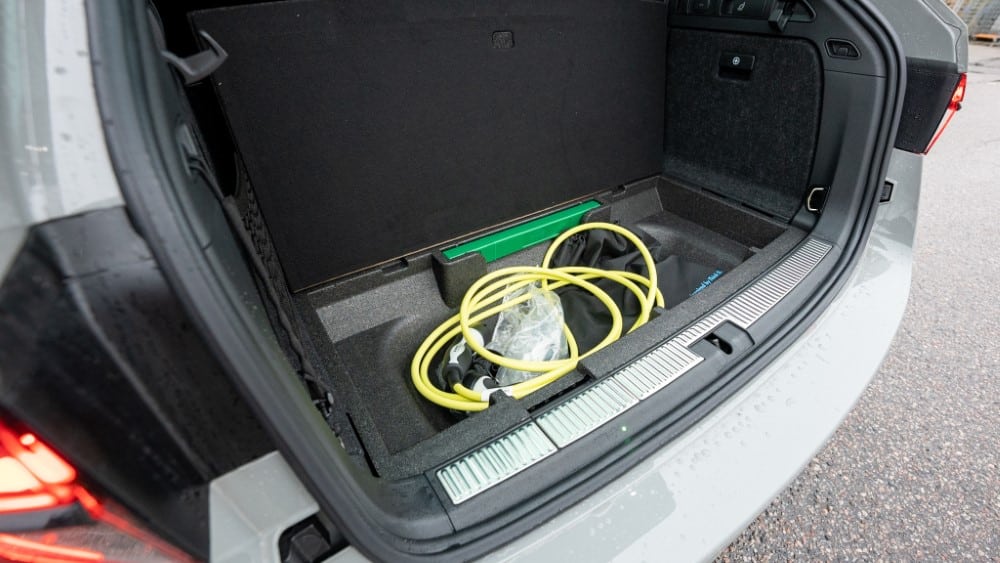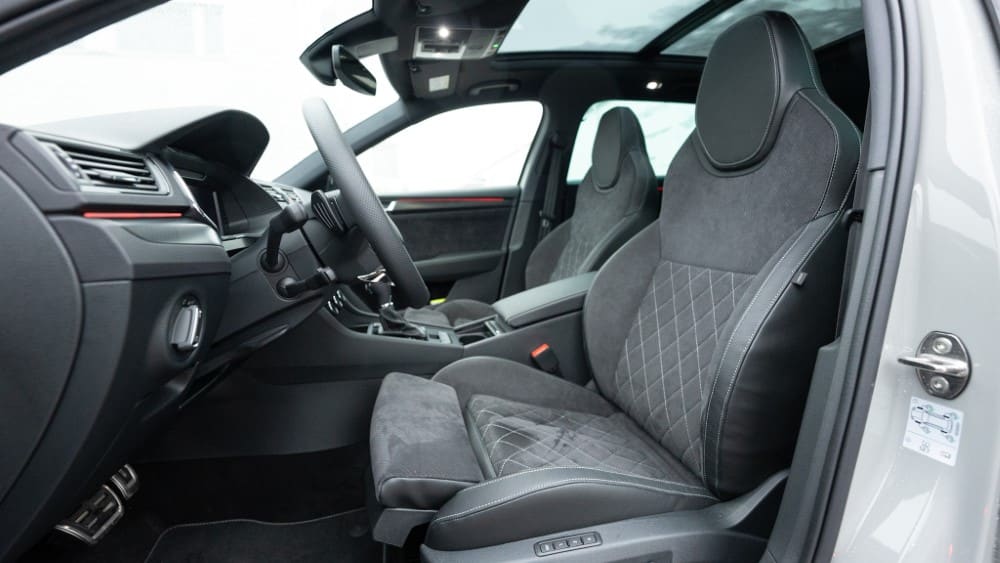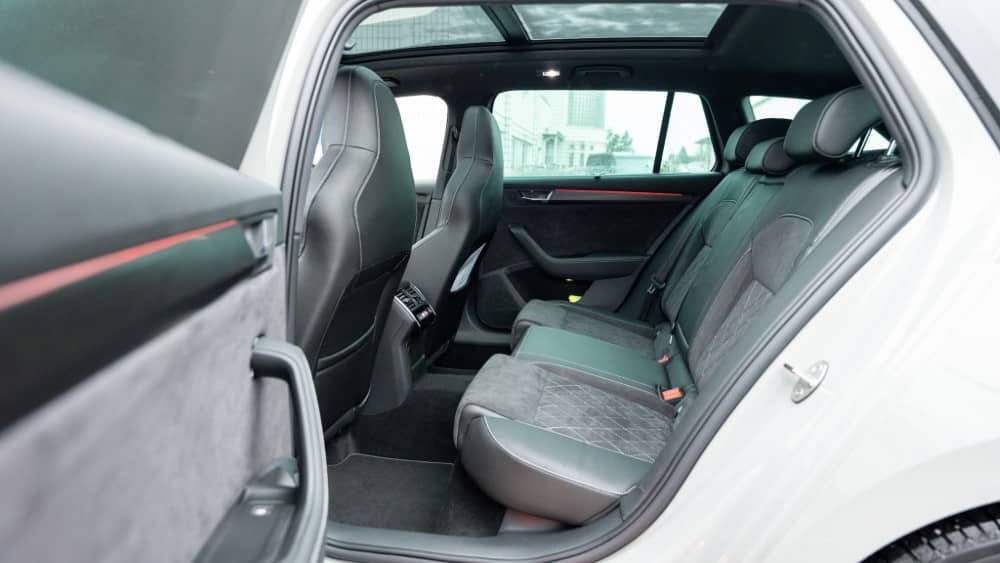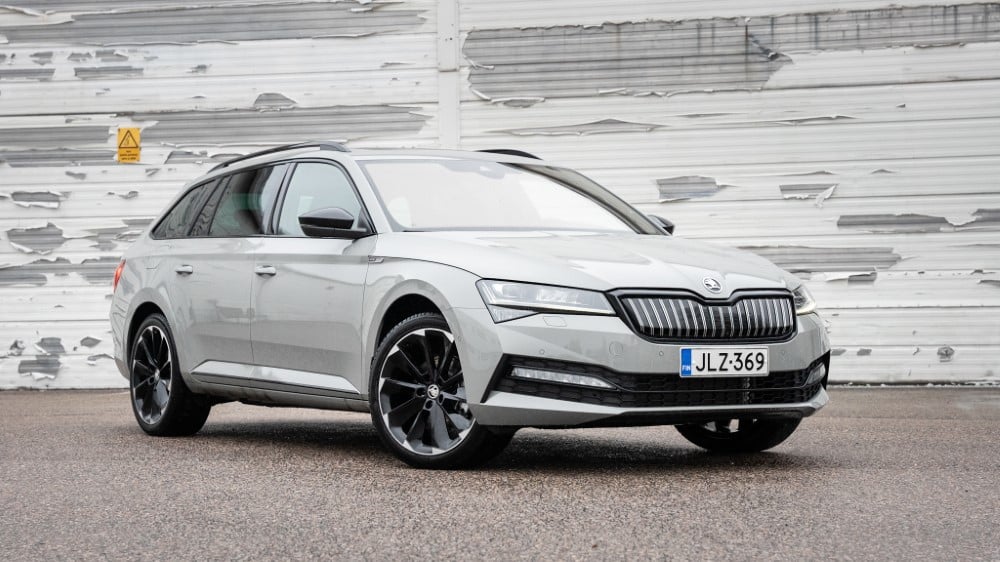The Škoda Superb Comb could be called the flagship of the family estate in terms of space and price. For a family jean, it looks delicious, and the special steel grey colour of the test car gives the large estate a sporty dark-blue look.
But the Superb, which shares a very similar design to the Octavia, looks like a full-grown adult in size.
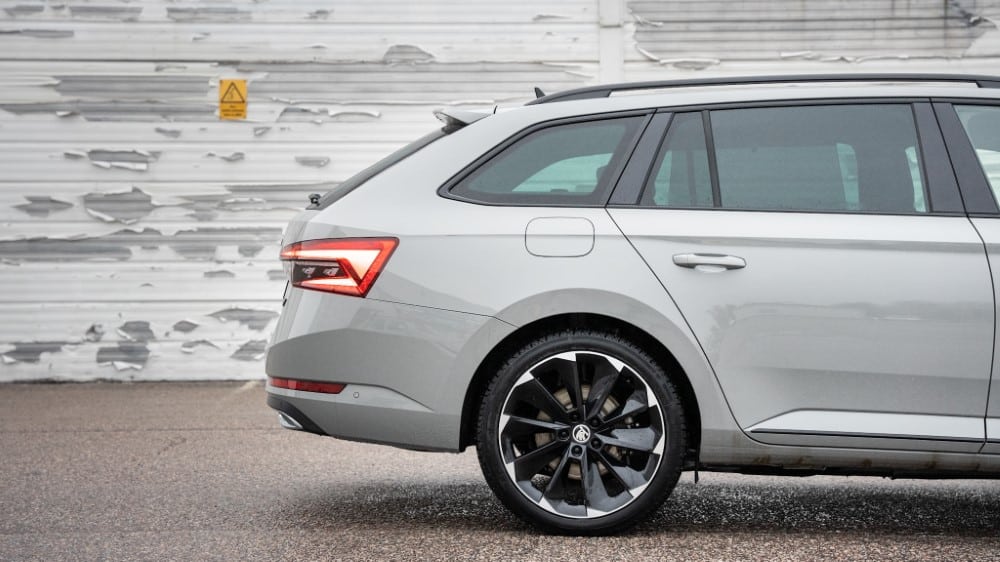
Go electric
Under the Škoda iV brand name lies the Škoda range of electrified cars. The Škoda Superb iV has the honour of being the first rechargeable hybrid model in Škoda’s history.
The Superb has already been joined by other electrified models, and Škoda’s iV range will grow to more than ten models by the end of 2022.
The Superb’s list of powertrain options looks much more traditional than its smaller brother, the Octavia.
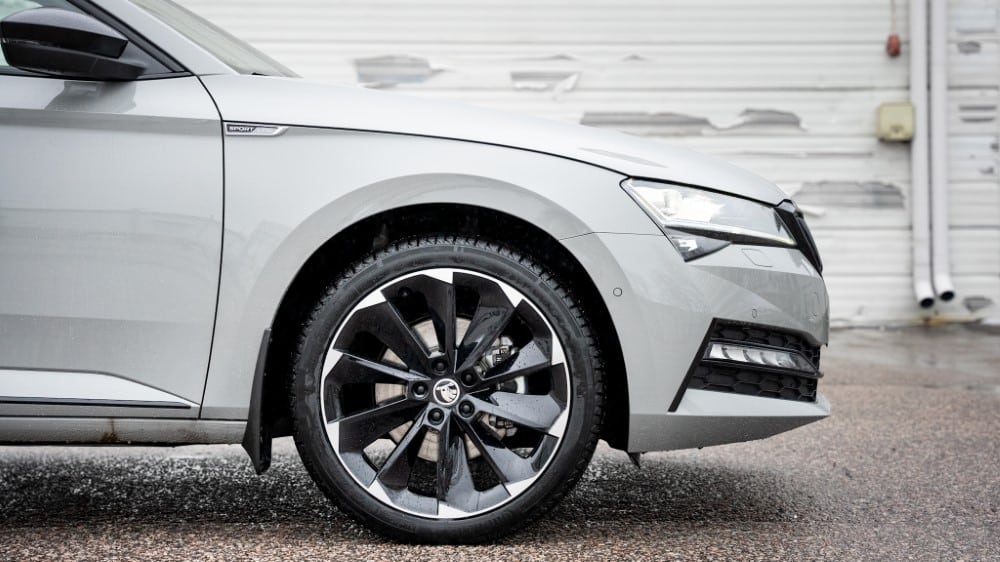
While the brand new Octavia offers a choice between gas, light hybrid, charging hybrid and conventional combustion engine options, the Superb’s list includes petrol and diesel engine options in addition to the test-driven charging hybrid.
The Superb iV’s 13 kWh gross capacity of the battery is available for around 10 kWh. During the test drive, a best of 46 electric kilometres were achieved on a full battery, which is quite normal for a battery and a car of this size.
The car’s hybrid technology is powered by a powerful 85 kW electric motor and a 1.4 litre four-cylinder petrol engine.
The petrol engine has a maximum power output of 157 hp and the system has a maximum combined output of 218 hp. Available only as a front-wheel-drive model, the Superb iV charging hybrid would also be nice to experience as an all-wheel-drive model.
When driving, it is difficult to tell the difference between a petrol engine and an electric motor. When driving with an electric-only engine, the car’s E-noise system produces engine noise, making it easier for pedestrians and cyclists to spot an electric-only car.
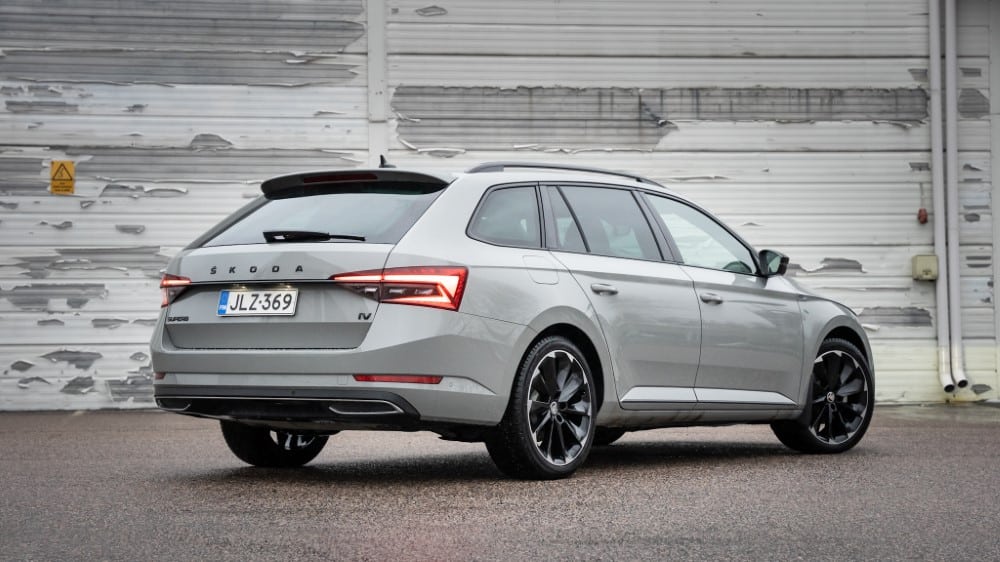
Charging the battery from the grid or from the engine
When charged from the mains, the battery can be fully charged in about 3.5 hours at the fastest using a Mode 3 charging cable with 3.6 kW of power. For temporary charging, it is also possible to use a home power socket, which at its fastest will charge the battery in about five hours. The car’s charging socket can be found on the front bumper.
When driving, the battery can be charged using braking energy. The DSG gearbox can be found in B-position, whereby the car is slowed down during normal driving mainly by the electric motor, and the recovered braking energy is stored in the battery.
The battery can also be charged directly by the internal combustion engine while driving, with the desired charge level being set on the touchscreen. However, there is a marked increase in fuel consumption and it is not possible to achieve economic results with this method.
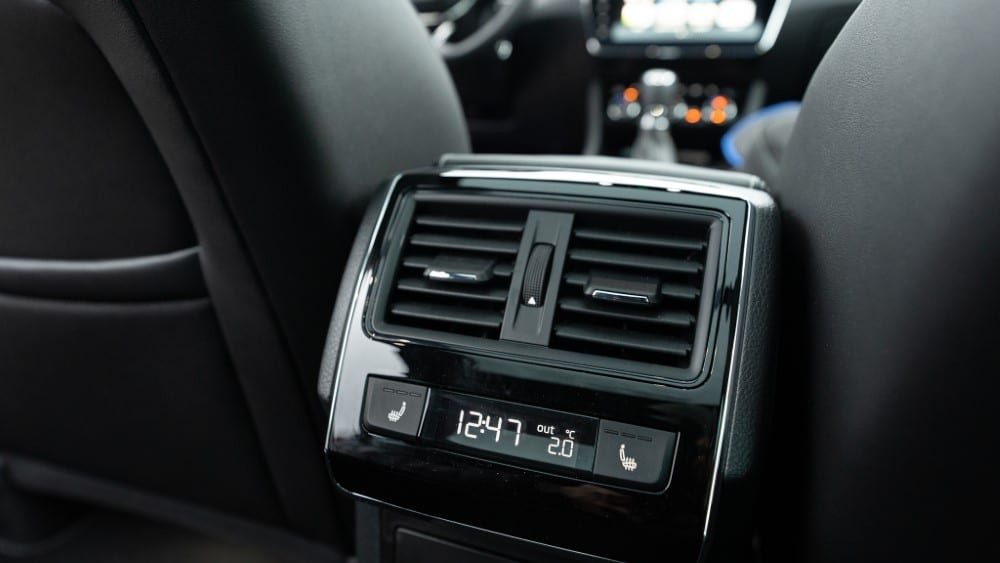
Space for goods
The Superb is known for its huge rear legroom and large boot. The Superb iV has had to squeeze litres of boot space for the lithium-ion battery pack at the front of the rear axle. The estate iV has 510 litres and the Superb with an internal combustion engine alone has as much as 660 litres.
The Superb saloon also offers 485 litres (iV) and 625 litres (non iV). With more than 500 litres, the estate Superb iV is at the top of the list compared to its competitors and makes it much easier to pack even a larger family.
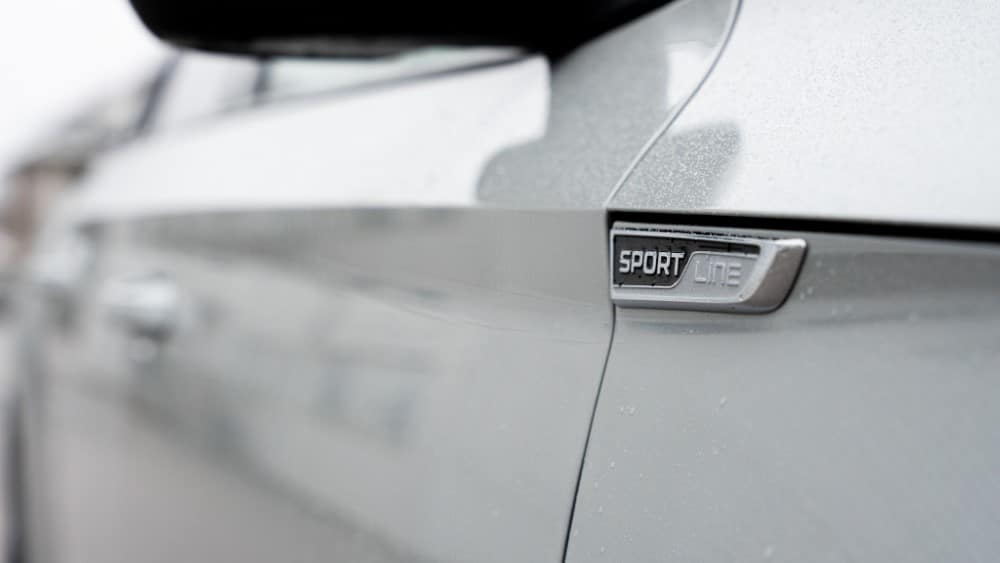
Scoring points for design
The simple, angular shapes of the exterior are one of the Superb’s best features. There’s no unnecessary rounding of shapes, and the sharp, cutting, straight lines give the car a sporty, youthful look.
The gloss black detailing included in the Sportline equipment package on the test car adds to the sporty look. The black details, combined with the car’s black rims, tinted rear windows and steel grey special colour, make the family jeans look very appealing.
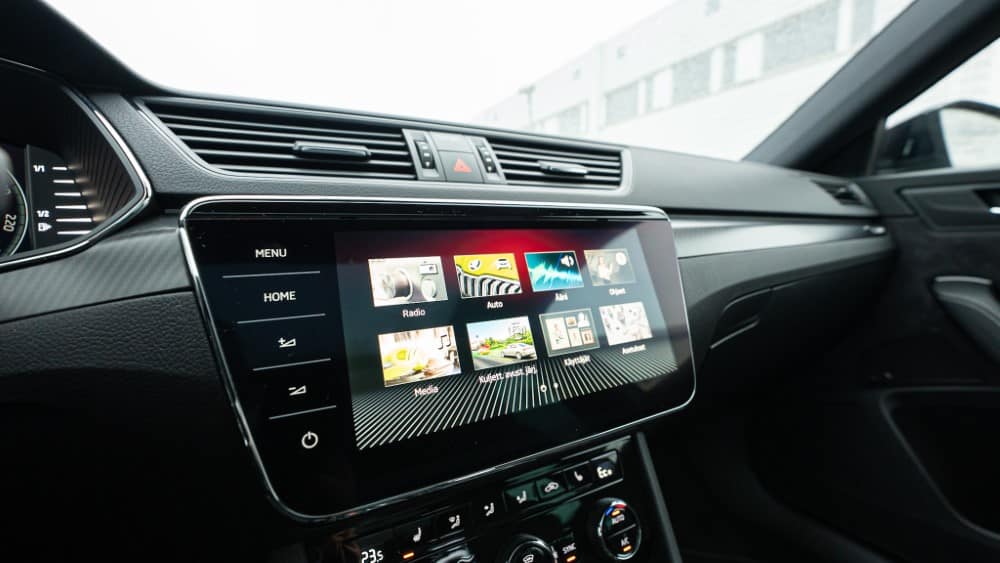
Click here to see other Skoda test drives.
The sporty look continues inside. The cabin is kept simple and darkly clean in design. The materials are mostly of high quality to the touch.
The centre console and dashboard are quite traditional and unsurprising. The size of the touchscreen on the dashboard varies between 8-9.2 inches, depending on trim level.

Captures the flagship title with its quietness
It’s not a luxury car, but the low noise level when driving is a big plus for quality. In the Superb, cabin tyre noise is kept quite low, and as a long-distance companion, Skoda’s flagship is a pleasure to drive.
Despite its sporty appearance, the sportiness is not transmitted behind the wheel. The best aspects of the ride are the feel of the chassis, which is convincingly stiff on flat roads. On rough roads, the quality of the chassis is lost in the bumpy bumps. The light, comfort-focused steering lacks the most precise sensitivity and feel.
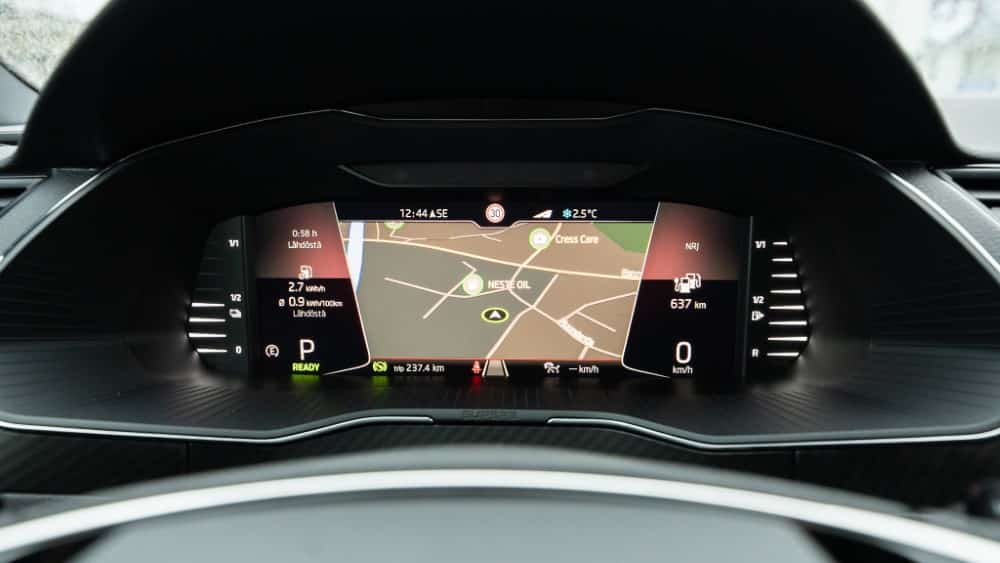
In terms of price, the Superb offers options for many consumers. At its cheapest, the sedan Superb can be had for less than 30 thousand euros, and at its most expensive, starting at over 60 thousand euros, if you want to enjoy, for example, the massaging and air-conditioned seats offered by Laurin & Klement.
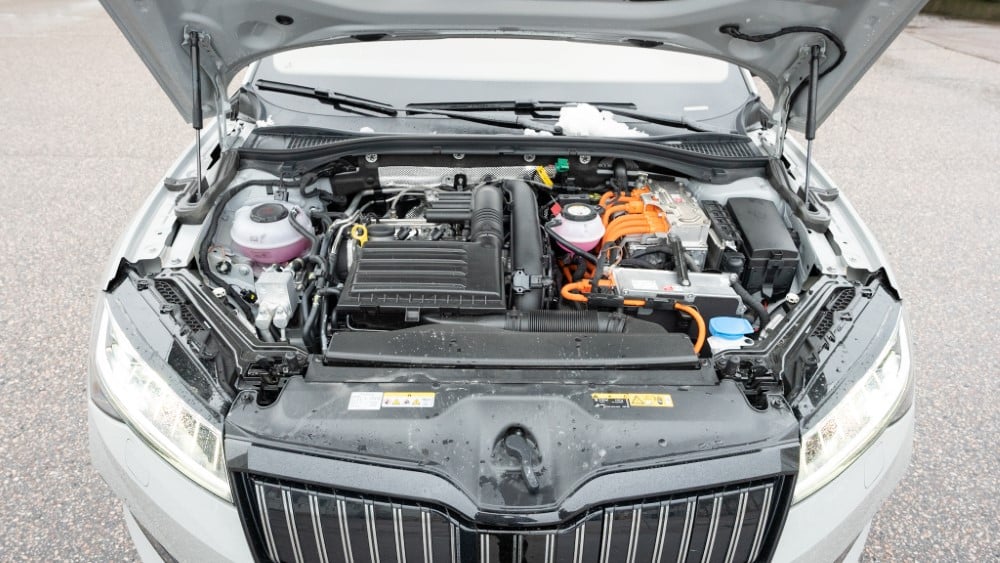
Škoda Superb Combi 1.4 TSI PHEV Sportline iV DSG.
- Engine: 1395 cm³, 4-cylinder, petrol
- Combustion engine power: 157 hp / 115 kW. @ 5000-6000 rpm.
- Combustion engine torque: 250 Nm. @ 1550-3500 rpm.
- Electric motor power: 85 kW.
- Electric motor torque: 330 Nm.
- Total maximum power: 160 kW, 218 hp.
- Maximum total torque: 400 Nm.
- Driving battery capacity: 13 kWh
- Indicated operating range on a single charge: 57 km.
- Test-driven range on a single charge: 46 km.
- Acceleration: 7.8 sec (0-100 km/h)
- Combined consumption: 1.3 l/100km.
- CO₂ emissions: 30 g/km.
- Fuel consumption in test drive: 5.6 l/100km.
- Curb weight: 1752-1926 kg.
- Drive mode: front-wheel drive
- Boot space: 510 l.
- Towing capacity: 1600 kg.
- Starting price: 42 536 (1.4 TSI PHEV Ambition iV DSG.)
- Test drive price: €55,361
